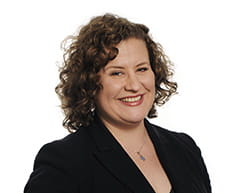On Friday 29 May the Chancellor of the Exchequer announced changes to the Coronavirus Job Retention Scheme (CJRS) which will take place over the next few months. The CJRS is currently due to expire at the end of October and will close to new entrants on 30 June.
Closure of the scheme
From 30 June employers will only be able to furlough employees that they have furloughed for a full 21 day period before 30 June. As a result the final date by which an employer can furlough an employee for the first time will be 10 June. From 1 July the CJRS will only be available to employers that have previously used the scheme for employees they have previously furloughed.
In addition, from 1 July, claim periods will no longer be able to overlap months, so employers who previously submitted claims with periods that overlapped calendar months will no longer be able to do this.
Employers will have until 31 July to claim for anyone furloughed until 30 June.
Flexible furlough
From 1 July part-time working will be allowed under the scheme. HM Treasury has published a factsheet which gives more detail as to how flexible furloughing will be implemented. Employers will be able to bring back to work any employees who have previously been furloughed for any amount of time and any shift pattern. While the employer will still be able to claim under the CJRS for those employees' normal hours not worked, it will have to pay in full for any hours worked and will be responsible for the tax and NI contributions on those payments.
When claiming the CJRS grant for furloughed hours employers will need to report and claim for a minimum period of a week. Those making claims for longer periods such as those on monthly or two weekly cycles will be able to do so. In order to be eligible for the grant, employers will have to agree with their employees any new flexible furloughing arrangement and confirm that agreement in writing.
Further guidance on flexible furloughing and how employers should calculate claims is due to be published on 12 June and we will update you once it's out.
Costs to employers
The level of the CJRS grant will be gradually tapered, reflecting the fact that more and more people will be returning to work.
From August employers will have to pay NI and pension contributions. In September they will have to pay 10% of wages (the government will contribute 70% up to a cap of £2,187.50) for the hours the employee does not work and this will rise to 20% in October (with the government contributing 60% up to a cap of £1,875).
We'll be doing a full update and Trowers Tuesday on 16 June to discuss flexible furlough again.

